|
The Most Printed and Read Book of All
Time
________________________________________________________
QUESTION:
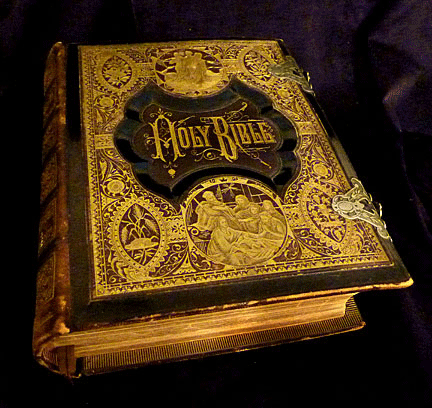 I recently purchased an old Bible at an antique show. It’s one of
those big Victorian pictorial family ones and seems to have all
kinds of features besides just the Old and New Testaments. As far as
I can tell, the copyright date is 1881 from George V. Jones of
Boston, Massachusetts. The presentation page says a woman gave the
Bible to a man, most likely her husband, on Christmas Day in 1882.
While the exterior shows some wear, the interior is in pristine
condition. I also own two other Bibles from the second half of the
19th century. What can you tell me about this particular Bible and
perhaps others like it?
I recently purchased an old Bible at an antique show. It’s one of
those big Victorian pictorial family ones and seems to have all
kinds of features besides just the Old and New Testaments. As far as
I can tell, the copyright date is 1881 from George V. Jones of
Boston, Massachusetts. The presentation page says a woman gave the
Bible to a man, most likely her husband, on Christmas Day in 1882.
While the exterior shows some wear, the interior is in pristine
condition. I also own two other Bibles from the second half of the
19th century. What can you tell me about this particular Bible and
perhaps others like it?
Thanks,
Harold
_________________________________________________________
ANSWER:
From what I can tell about your Bible, you
may possibly have a winner. In the world of Bibles,
especially those from the later 19th century, only a few
stand out.
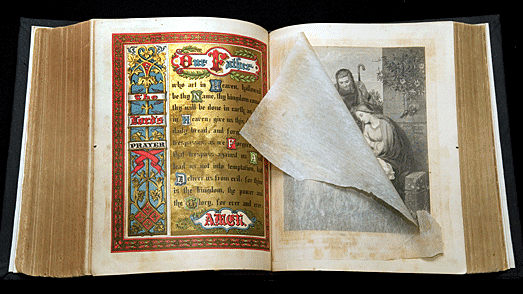
George V. Jones of Boston did indeed print your Bible.
This particular edition includes the Old and New Testaments, as well as
the Concordance, Aprocypha, and Psalms. In all, it contains 2,500
illustrations. But what makes your Bible stand out is that it won a
Diploma of Merit at the International Cotton States Exposition in
Atlanta, Georgia in December of 1881.
Bible History
Johannes Gutenberg invented
the printing press and utilized movable type in 1455. Books could now be
mass-produced instead of individually hand-written. The first book ever
printed was Gutenberg’s Bible in Latin.
William Tyndale published the first complete English translation of the
New Testament in Germany in 1526. But the Church of England considered
it heresy and destroyed copies. It wasn't until 1535 that the entire
Bible—both the Old and New Testaments----appeared in English.
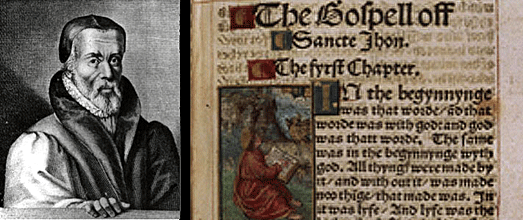
The King James Bible, ordered by King James I, was the third English
Language version authorized by the Church of England and the most famous
one in English. But prior to its printing, at
least 239 editions of the English Bible were in print. Since 1611, the
number of English versions has exploded.
Though the King James Bible first
appeared in 1611, it wasn’t until the late 19th century that the English
Revised Version became the first Bible to gain popularity. At the same
time, Bibles began to omit the 14 Apocryphal books. Formerly, all Bibles
had 80 books, but by the 1890s they only contained 66.
The first Bible published in America
was the Eliot Bible, printed for the Natick Native American tribe in
their own language in 1663. The first English-language Bible printed in
America (a King James version) was published in 1782.
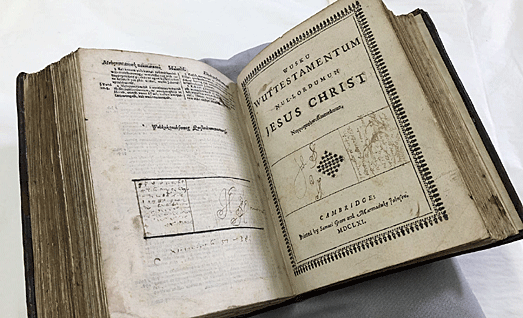
The Appearance and Contents of
Antique Bibles
Large family Bibles from the
19th century, particularly study Bibles with illustrations, maps, and
commentary are very popular with collectors. But what do old Bibles
include? Surely, the Old and New Testaments, but there’s often much
more. Bibles published for various Christian religions may include
different features, such as a Bible Dictionary, a History of the
Religious Dominations of the World, and detailed studies of the events
and persons in the Bible’s text. Then there’s the endless variety of
translations. For most Bible collectors, figuring out how to narrow the
scope of their collection can be a challenge.
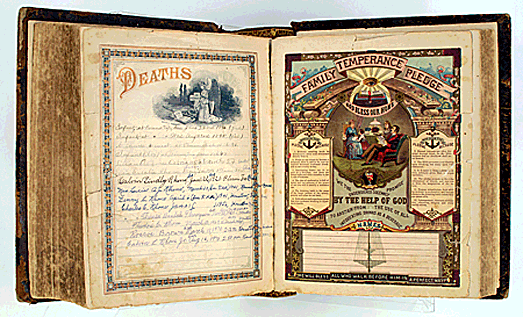
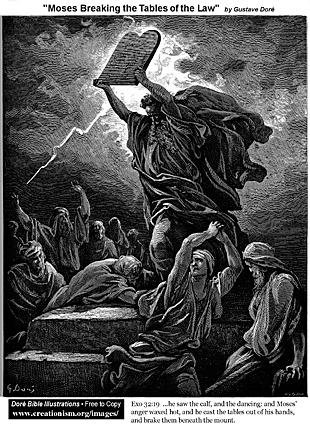 Gustave
Doré was one of the most acclaimed and popular illustrators of the 19th
century, and his illustrated Bible is a landmark in the field. He made
more than 200 engravings, illustrating the events of the Bible with
great detail. The first edition appeared in France in 1866, but
publishers like George Jones reprinted his work throughout the following
decades. This Bible features the engravings of Gustav Dore. Gustave
Doré was one of the most acclaimed and popular illustrators of the 19th
century, and his illustrated Bible is a landmark in the field. He made
more than 200 engravings, illustrating the events of the Bible with
great detail. The first edition appeared in France in 1866, but
publishers like George Jones reprinted his work throughout the following
decades. This Bible features the engravings of Gustav Dore.
Ninety percent of all Bibles, including this one, are standard "Quarto"
size printings, measuring about 7 to 10 inches wide by 9 to 12 inches
tall by 3 to 4 inches thick. Larger pulpit "Folio" size printings are
ten times as rare, and therefore more expensive.
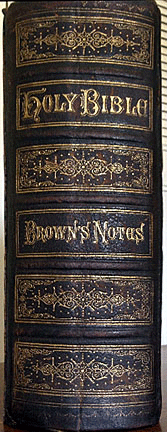 Old
Bibles were always hardbound. Most had full leather covers and spine
while some had leather spines and corners but fabric centers on the
front and back covers. Armored or ornamented bindings with metalwork at
the corners and center and clasps and latches that hold the book shut
also adorn some of these Bibles. Most old family Bibles also had raised
bands on their spine known as a “hubbed” spine. Old
Bibles were always hardbound. Most had full leather covers and spine
while some had leather spines and corners but fabric centers on the
front and back covers. Armored or ornamented bindings with metalwork at
the corners and center and clasps and latches that hold the book shut
also adorn some of these Bibles. Most old family Bibles also had raised
bands on their spine known as a “hubbed” spine.
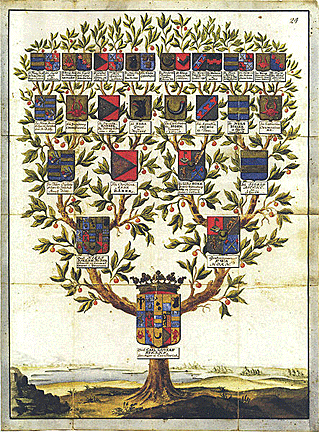 Bible
makers used two decorative techniques—blind stamping where an impression
is stamped into the leather resulting in a design or "Gold-Stamped",
where gold has been applied into the groove of the stamping, such as the
words "Holy Bible" might be stamped in gold on the spine. The cover of
this Bible has extensive gold stamping. Bible
makers used two decorative techniques—blind stamping where an impression
is stamped into the leather resulting in a design or "Gold-Stamped",
where gold has been applied into the groove of the stamping, such as the
words "Holy Bible" might be stamped in gold on the spine. The cover of
this Bible has extensive gold stamping.
Older Bibles often include a “concordance,” also referred to as “The
Table of Names and Table of Things.” This is essentially an alphabetical
index to the scripture which helps readers locate a passage based on
what words appear in that passage.
Some older Bibles offer a 36-page illustrated "Family Tree of Man" which
traces every generation of the first 4,000 years of mankind, from Adam
and Eve through Noah through David to Joseph, Mary, and Christ.
Collecting Antique Bibles
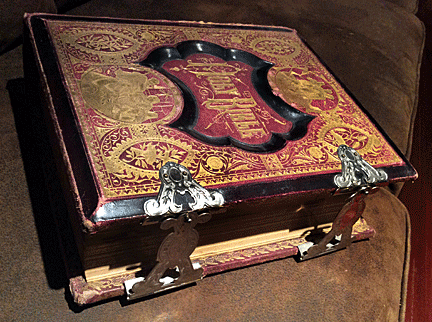 There
are many types of antique Bibles that are collectible for various
reasons. The most popular are: Beautiful or ornate bindings, large
vellum clasped folios, gorgeous full-plate illustrations, early 15th to
17th-century woodcuts, maps, later steel engravings, chromolithographic
printings, and specific language translations. There
are many types of antique Bibles that are collectible for various
reasons. The most popular are: Beautiful or ornate bindings, large
vellum clasped folios, gorgeous full-plate illustrations, early 15th to
17th-century woodcuts, maps, later steel engravings, chromolithographic
printings, and specific language translations.
As the most widely read book in Western civilization, the Bible offers a
variety of collecting possibilities. Many collectors pursue specific
themes, including very old Bibles, family Bibles containing family
trees, maps, or notes, and interesting translations.
Condition Makes All the Difference
The Bible is not only the
single most printed book in history but it’s also the most read.
Therefore, condition is important in determining the value of an antique
Bible.
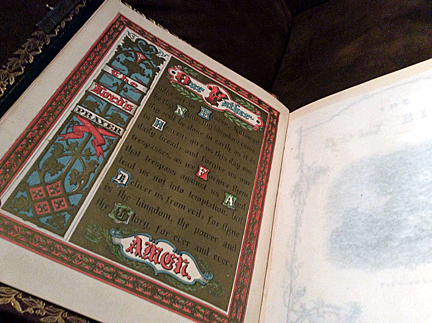
Collectors prefer exceptionally old
Bibles. However, the older the Bible, the less important condition
becomes. Due to the relative scarcity of antique Bibles in decent
condition which are 200 or more years old, their value and
collectibility rises.
Determining the Value of an Antique
Bible
Gutenberg’s 42-line Bible,
printed around 1455 using “moveable type,” is probably the most valuable
printed book, with single leaves selling for $60,000 to $100,000. Bibles
are the most common book in the world, having been translated into 698
languages.
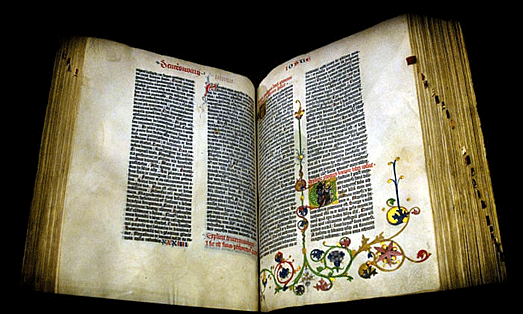
Rarity plays a big part in the value of an old Bible. In general, a
Bible published from around 1820 to 2000 has little or no value unless
there’s something special about it, such as if it’s finely bound or has
some special characteristic which sets it apart from others. However,
the elaborateness of the binding doesn’t affect a Bible’s price. A
Bible’s value depends mostly on its completeness, condition, content,
and the size of its pages, not on the age of the piece of leather that
it happens to be bound in at the time. Many collectors prefer a new
leather binding, to one that’s worn and less attractive. They’re more
interested in the quality of the pages of text.
<
Back to Readers Ask Archives
Next Article >
|
